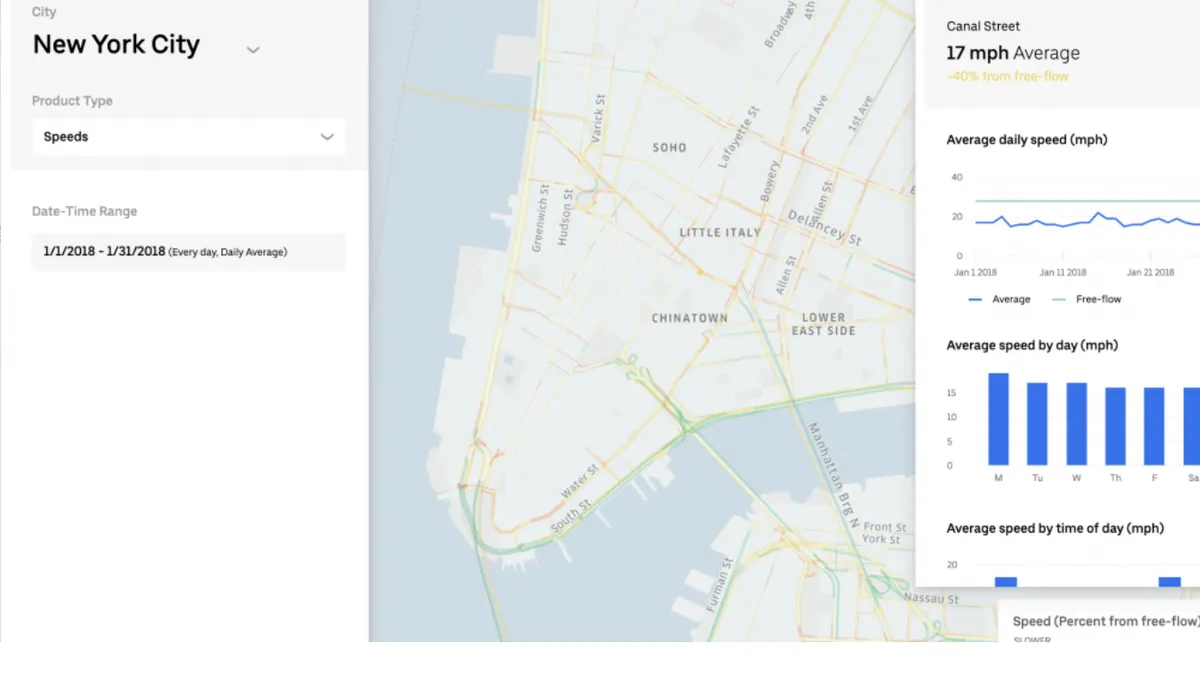Dive Brief:
- Uber Movement, a tool urban planners can use to analyze city streets and implement transportation changes, has introduced Uber Movement Speeds in five cities to show road speed data: Cincinnati, OH; London; Nairobi, Kenya; New York; and Seattle.
- The tool will show the average speed on specific city streets, including how it varies by day and by time each day. Uber said speed data helps city leaders evaluate the impact of infrastructure investments; work out where congestion is occurring; assess where pedestrians and bicyclists are most at risk; and help prioritize projects like traffic calming and policies to improve safety.
- "Since launching Movement, we've consistently heard a request for more granularity and interoperability in our data," Jordan Gilbertson, product manager for Uber Movement and Emily Strand, head of public policy for Uber Movement, wrote in a blog post for the company. "Our speeds product is just that, providing more specificity at the street segment and hourly level."
Dive Insight:
Uber has been gradually expanding its Movement platform to help some of the world's most congested cities make better urban planning decisions.
Last year, the company announced a 12-city expansion of the product, and at a press conference, Uber regional general manager for the United States and Canada, Meghan Joyce, said the company is excited to assist urban planners. Simultaneously, the company integrated Jump bikes into its Movement platform to encourage more people to use the dockless vehicles.
Notably, the introduction of Uber Movement Speeds to Cincinnati comes after the one-year anniversary of an extensive partnership between the two. That partnership has included a study of curbside data and the augmentation of regional travel data through Movement, with other initiatives like a transit study.
In a statement released by Uber, Mark Policinski, CEO of The Ohio-Kentucky-Indiana Regional Council of Governments (OKI), said the "key to solving this nation’s immense transportation challenge is cooperation, and Uber has been a champion partner for OKI."
As cities battle with crippling traffic congestion, tools such as Uber Movement Speeds will help determine pain points and where investments should be made. In addition, with the growth of pedestrian fatalities and a desire to see more bicycle and pedestrian-friendly facilities on city streets, this tool could help urban planners figure out how to move away from car-dominant areas.












